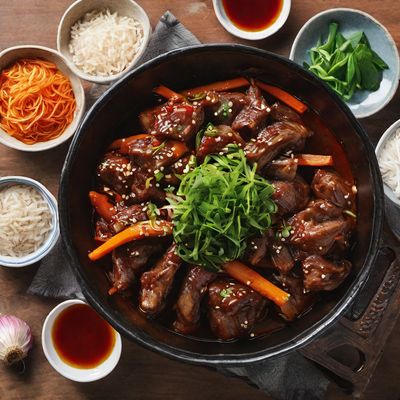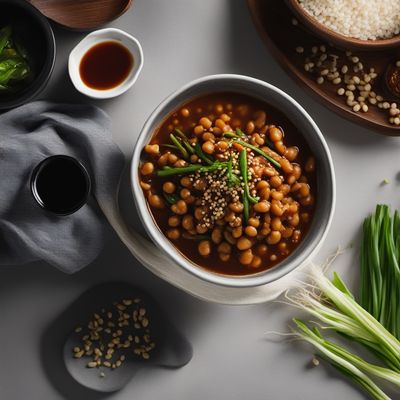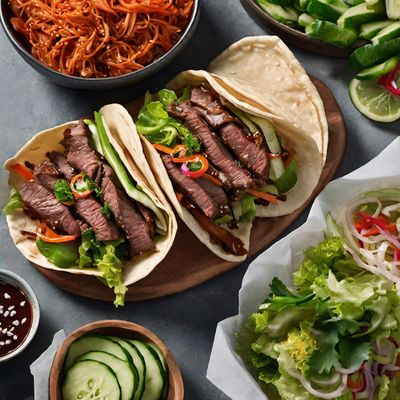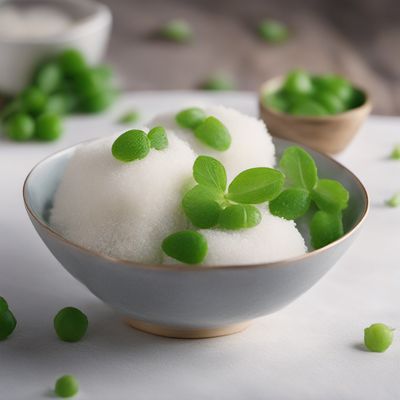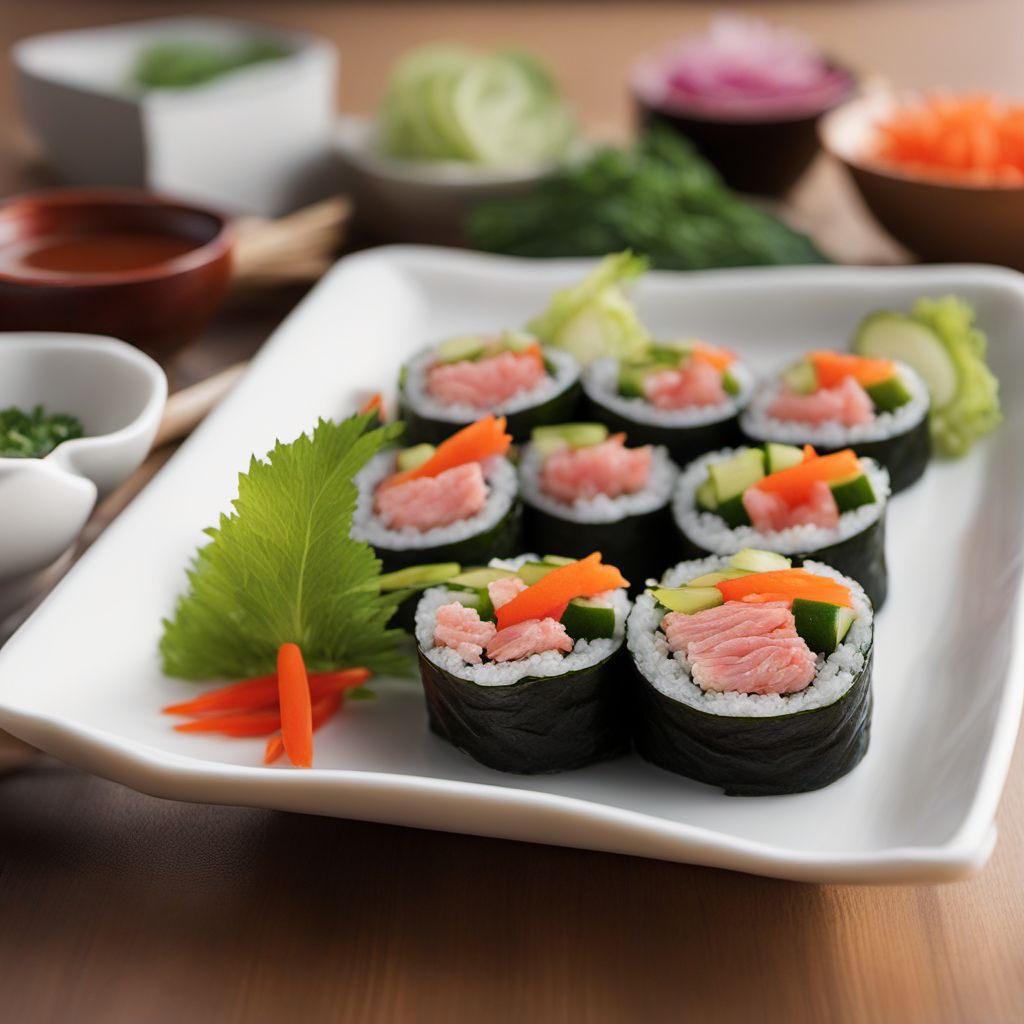
Recipe
Baltic-style Tuna Gimbap
Oceanic Delight: Baltic-style Tuna Gimbap
4.7 out of 5
Indulge in the flavors of the Baltic region with this delightful twist on the classic Korean dish, Chamchi Gimbap. This Baltic-style Tuna Gimbap combines the freshness of tuna with the unique flavors of Baltic cuisines, resulting in a harmonious fusion of cultures.
Metadata
Preparation time
20 minutes
Cooking time
N/A
Total time
20 minutes
Yields
4 servings
Preparation difficulty
Easy
Suitable for
Pescatarian, Gluten-free, Dairy-free, Nut-free, Low-fat
Allergens
Fish (tuna)
Not suitable for
Vegan, Vegetarian, Paleo, Keto, High-fat
Ingredients
In this Baltic-style adaptation, we incorporate ingredients commonly found in Baltic cuisines to infuse the dish with regional flavors. The original Chamchi Gimbap is traditionally made with Korean ingredients such as kimchi and sesame oil, but in this version, we substitute them with Baltic-inspired pickled vegetables and dill-infused oil. This adaptation adds a unique twist to the dish, creating a fusion of Korean and Baltic flavors. We alse have the original recipe for Chamchi gimbap, so you can check it out.
-
4 sheets of seaweed 4 sheets of seaweed
-
2 cups (400g) cooked sushi rice 2 cups (400g) cooked sushi rice
-
1 can (150g) tuna, drained 1 can (150g) tuna, drained
-
1 tablespoon dill-infused oil 1 tablespoon dill-infused oil
-
1 tablespoon soy sauce 1 tablespoon soy sauce
-
1 tablespoon rice vinegar 1 tablespoon rice vinegar
-
1 tablespoon sugar 1 tablespoon sugar
-
1/2 cucumber, julienned 1/2 cucumber, julienned
-
1/2 carrot, julienned 1/2 carrot, julienned
-
1/2 red bell pepper, julienned 1/2 red bell pepper, julienned
-
1/4 red onion, thinly sliced 1/4 red onion, thinly sliced
-
Salt, to taste Salt, to taste
Nutrition
- Calories (kcal / KJ): 250 kcal / 1046 KJ
- Fat (total, saturated): 4g, 0.5g
- Carbohydrates (total, sugars): 45g, 4g
- Protein: 10g
- Fiber: 2g
- Salt: 1.5g
Preparation
-
1.In a small bowl, combine the dill-infused oil, soy sauce, rice vinegar, and sugar. Mix well to create a marinade.
-
2.In a separate bowl, combine the drained tuna with half of the marinade. Set aside to marinate for 10 minutes.
-
3.In a large mixing bowl, combine the cucumber, carrot, red bell pepper, red onion, and the remaining marinade. Toss well to coat the vegetables in the marinade.
-
4.Lay a sheet of seaweed on a bamboo sushi mat or a clean surface.
-
5.Spread a thin layer of sushi rice evenly over the seaweed, leaving a small border at the top.
-
6.Arrange a line of marinated tuna and pickled vegetables in the center of the rice.
-
7.Carefully roll the seaweed and rice tightly using the sushi mat, applying gentle pressure to ensure a compact roll.
-
8.Repeat the process with the remaining ingredients.
-
9.Slice the rolls into bite-sized pieces using a sharp knife.
-
10.Serve the Baltic-style Tuna Gimbap with soy sauce for dipping.
Treat your ingredients with care...
- Tuna — Ensure the tuna is well-drained before marinating to prevent excess moisture in the gimbap.
Tips & Tricks
- For a vegetarian version, substitute the tuna with marinated tofu or tempeh.
- Experiment with different pickled vegetables commonly found in Baltic cuisines, such as pickled beets or sauerkraut, to add more regional flavors.
- Add a touch of Baltic flair by garnishing the gimbap with fresh dill or chives.
- Serve the gimbap with a side of Baltic-style potato salad for a complete meal.
- If you prefer a spicier kick, add a small amount of Baltic-style mustard to the marinade.
Serving advice
Serve the Baltic-style Tuna Gimbap as an appetizer, snack, or light lunch. Arrange the bite-sized pieces on a platter and garnish with fresh herbs for an attractive presentation.
Presentation advice
To enhance the presentation, arrange the sliced gimbap rolls in a circular pattern on a serving plate, creating an eye-catching display of colors and textures. Serve with a small dish of soy sauce for dipping.
More recipes...
For Chamchi gimbap
For Korean cuisine » Browse all
More Korean cuisine dishes » Browse all

Hobakjeon
Zucchini Pancake
Hobakjeon is a Korean dish made with sliced pumpkin that is coated in a flour and egg batter and pan-fried.

Anju
Anju is a Korean term for food that is typically consumed with alcohol. It is usually served in small portions and is meant to be shared among...

Beondegi Soup
Silkworm Pupa Soup
Beondegi soup is a traditional Korean soup made with silkworm pupae. It is a popular street food in Korea and is known for its unique taste and texture.

